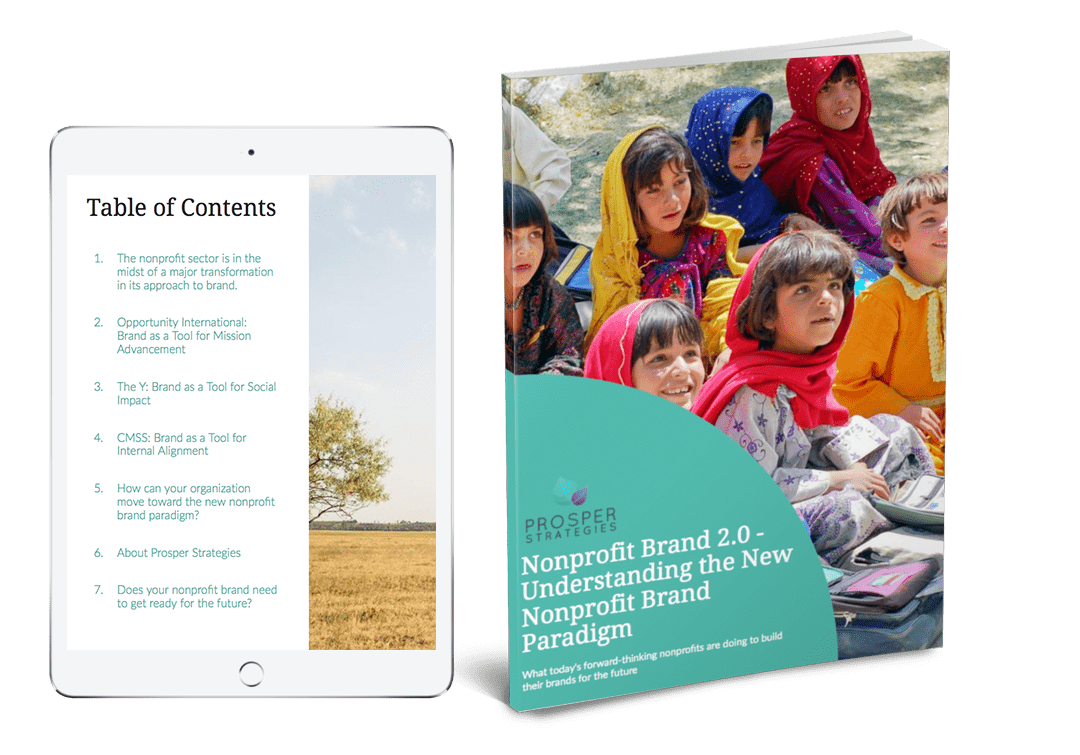A few weeks ago, Prosper Strategies hosted a Roundtable Dinner on The Role of Brand in the Nonprofit Sector. Twenty-plus nonprofit marketing and communications professionals from a diverse range of nonprofit organizations across Chicagoland attended and discussed nonprofit brand challenges and opportunities they’ve encountered throughout their careers.
Our panel included Phil Zepeda from the Robert R. McCormick Foundation, Erin Walton from Resilience (formerly Rape Victim Advocates) and Valentina Texera-Parissi from the Great Books Foundation. Each shared thought-provoking insights about the importance of brand in the nonprofit sector and challenges that come with a rebrand or brand refresh, both internally and externally.
Here are some of our biggest takeaways from the evening:
Treat your nonprofit’s brand differently than a for-profit brand.
If your nonprofit has been around for decades and your leadership team has decided it’s time to refresh the look and feel of your brand, you will have to approach the process from with a very different lens than a for-profit company might. That’s because consumer-focused brands like Old Spice and Target (which have both gone through significant rebrands), and even mission-minded social enterprise companies, have a very different end goal in mind than a nonprofit: increasing sales. As a nonprofit, your goals are deeper and more complex: fundraising, stakeholder education and activation, volunteer and talent acquisition, revenue generation and more.
[bctt tweet=”If your nonprofit has been around for decades and your leadership team has decided it’s time to refresh the look and feel of your brand, you will have to approach the process from with a very different lens than a for-profit company might.” username=”prosperstrat”]If you’re considering a rebrand or even just a brand refresh, keep in mind from the outset that this effort is about more than just improving your visual appearance or updating your website. A rebrand is an opportunity to level up not just your organization’s internal identity and external image, but also how you approach your mission and address your broad range of goals.
Involve your target stakeholders in expression of your brand.
Phil Zepeda spent years leading the communications team at Feeding America, formerly America’s Second Harvest, and played a major role in the organization’s name change 10 years ago. To get everyone on board with transition to a new name and identity, Phil and the rest of the leadership team involved key players like large corporate sponsors and board members throughout the rebrand process. Key players were kept in the loop on research and resulting name options, and “Feeding America” became the clear frontrunner when research indicated that this emotive name was best positioned to inspire support.
Getting executive leadership, board members and key donors on board with a rebrand or brand refresh may need to begin with a period of educating about why a change is necessary. Before revising your brand messaging, you may need to provide evidence about why shifting attitudes and preferences among the communities you serve requires organizations like yours to adapt new language and messaging nuances. For example, Resilience, formerly Rape Victim Advocates, changed its name and messaging to include more empowering language for those who have experienced sexual violence after transitioning to an organization-wide preference to identify clients as survivors rather than victims.
[bctt tweet=”Before revising your brand messaging, you may need to provide evidence about why shifting attitudes and preferences among the communities you serve requires organizations like yours to adapt new language and messaging nuances” username=”prosperstrat”]When deciding who to involve in a brand refresh or rebrand, it’s important to remember that everyone — from your most junior staff members to volunteers — should have a voice in personalizing your brand messaging. In order to be effective brand advocates, they have to believe in their day-to-day work and the mission behind your brand, and be able to articulate it in a way that’s consistent and cohesive.
Always keep your mission in mind.
When facing nonprofit brand challenges like a rebrand, keeping your mission in mind will help guide the process. Valentina Texera-Parissi said this was critical during the Great Books Foundation’s logo and website redesign. The Great Books Foundation’s previous logo was too literal, she said, and changing the logo to something that could have multiple meanings spoke to the many programs and services the Great Books Foundation offers.
The Great Books Foundation’s current logo
Erin Walton of Resilience echoed this sentiment, explaining that keeping sexual violence survivors top of mind through the organization’s rebrand process impacted their arrival at the name “Resilience.” She said thinking about introducing herself to survivors and saying she was from “Resilience” felt more in tune with survivors’ needs than “Rape Victim Advocates.” Keeping the communities you serve, and ultimately, your mission in mind will ensure your rebrand heads in a sustainable and impactful direction.
Nonprofit brand challenges are ever-changing.
Let’s keep this conversation going. Get in touch to tell us about the challenges you’ve faced with your own nonprofit brand, and let us know if you’re interested in attending our next roundtable event.
How much do you know about nonprofit branding?

